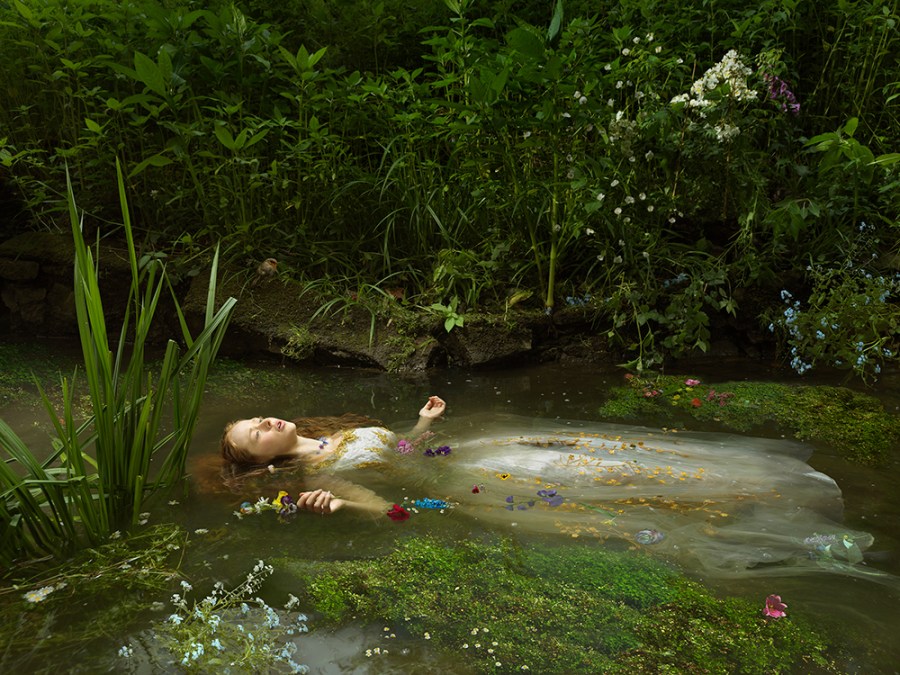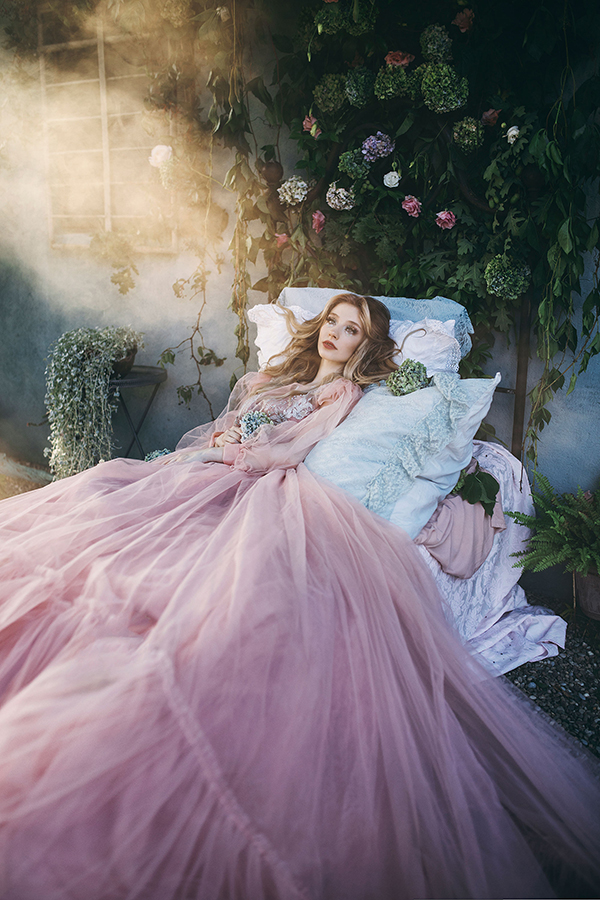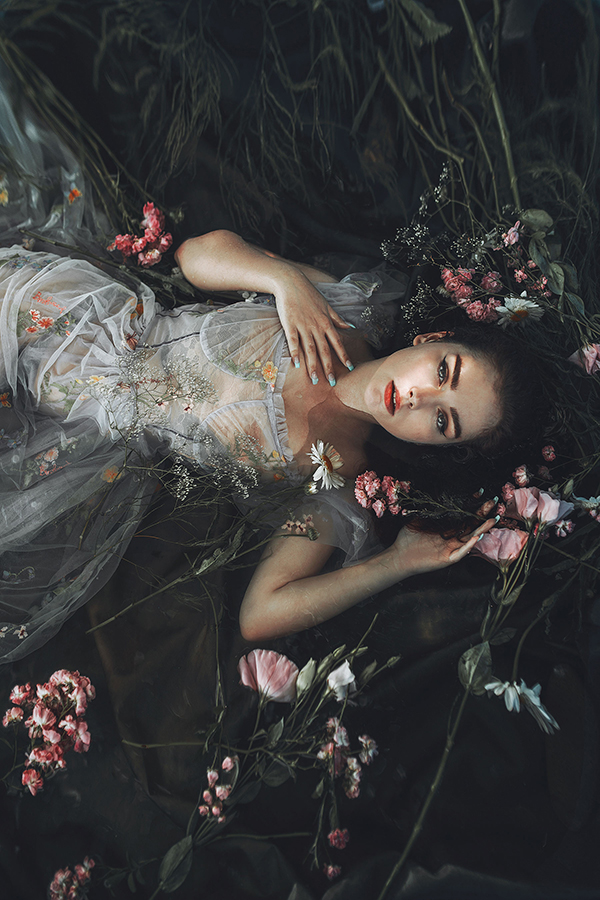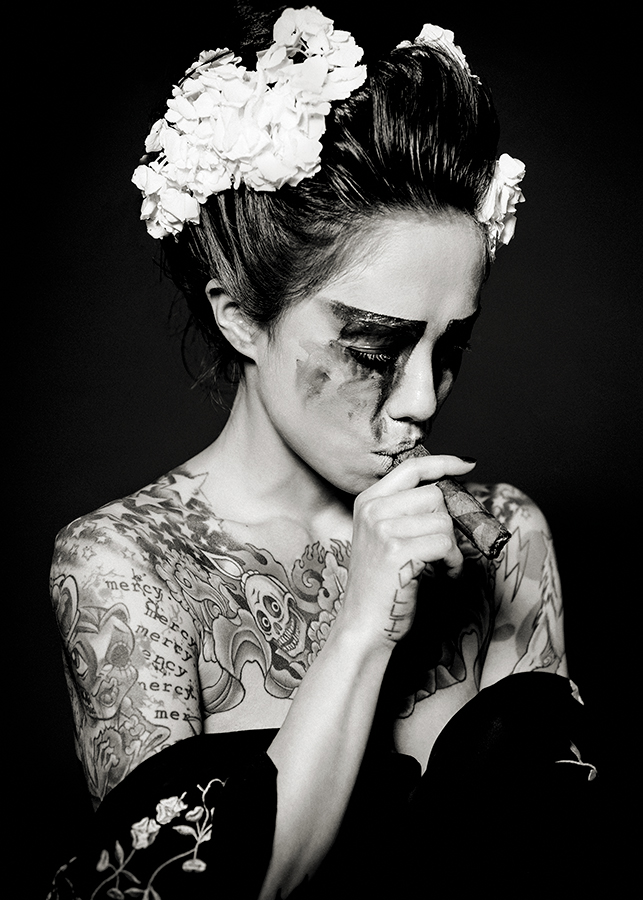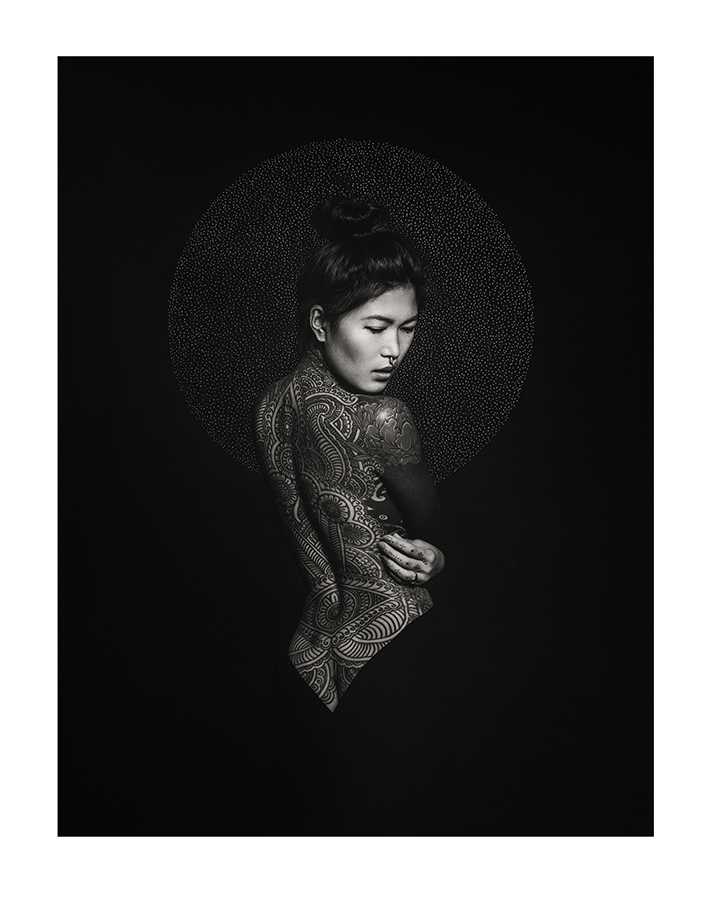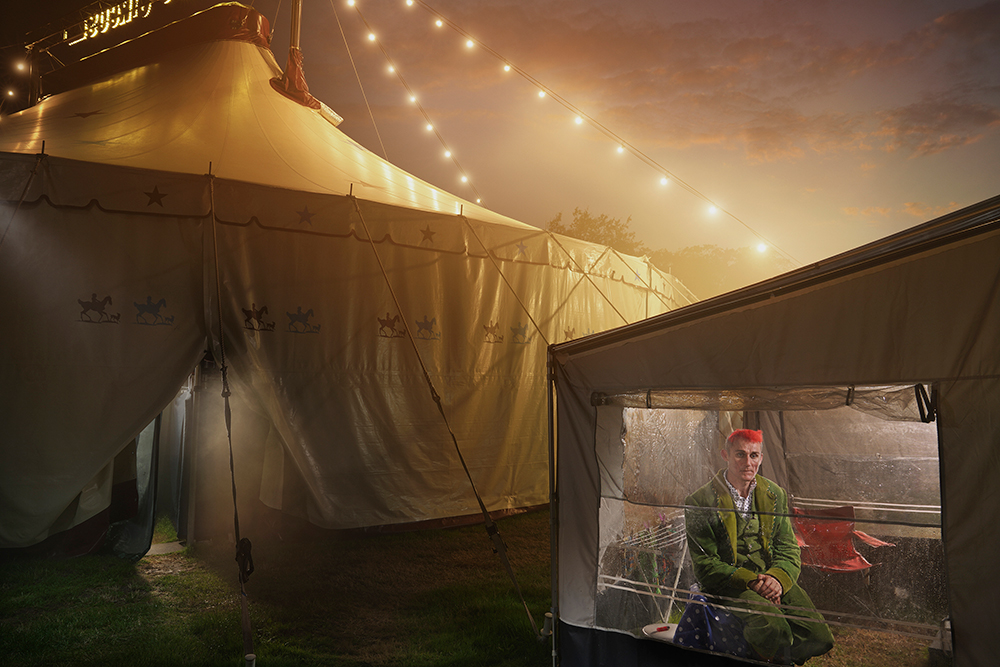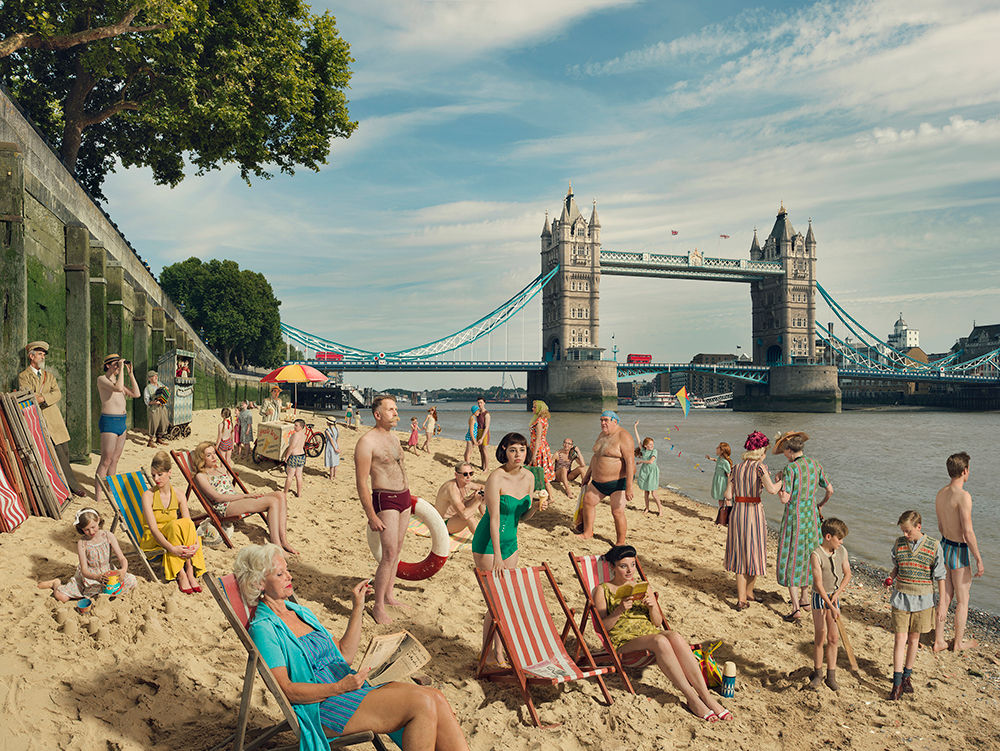What exactly is fine art photography and can you learn to do it? Peter Dench asks three experts of the genre for their practical advice and insights, on Fine Art. If you’re looking to understand fine art and the meaning behind it, then this article will guide you through what you need to know, as we speak to three expert fine art photographers.
Fine art and portrait photographer: Jovana Rikalo

Jovana Rikalo is a fine art and portrait photographer from Serbia. She has a degree in law but diverted to a career in photography in 2013. Her dreamy and emotion-packed imagery, often shot outdoors using soft, natural light, has grown her reputation and Instagram followers to over 216K. Commercial clients include Hugo Boss Serbia, Miss Yu and watch companies MVMT and ZINVO. jovanarikalo.com or Instagram: @jovanarikalo
What is Fine Art?
Fine art means there is a story behind an image. It’s not only a person standing on location. It is much deeper. Each element tells some story – the colour of the dress, the facial expression of the model, details in her hair, each detail speaks something. Telling a story is the whole point of photography for me. I love people to see the story I wanted to create and feel emotion because if there is no emotion there is no photography.
Model behaviour
When I choose the model I always choose one who can show emotions with their face. Most of the failures were when they didn’t know how to pose or were scared to show emotions. I always tell the story of my picture and tell them to think about a period of time, imagine that they are happy or sad. I had one girl who was an actor, she was so professional – that is a plus, to choose someone who is doing theatre or cinema.
Schooled in fine art
It took around two years to define myself as a fine art photographer. When I was starting I didn’t know what I wanted. Can you learn to be a fine art photographer? I think half and half. You must feel and learn, watch tutorials on the practical stuff. Inspiration and how you want to use your elements is personal.
Strategy
For some of the images I need two days, for some I need weeks, or months. When I’m picking portraits where only the face is visible I need two to five days. If I travel to another country or I need a dressmaker or a florist to arrange, I need months. I’m always more excited when I do this kind of project, it’s the whole step-by-step process. I have many notebooks.
One is for only the dresses, one is only for location. I always prepare although sometimes that is a bit of a problem because to be honest, sometimes I notice that when I don’t prepare that much I get the best images!
The price is right
When it comes to prints, I do an open and a limited edition. If it took a long time to create the image, I price it higher. If the image only took, say, two days and was very easy, I price it lower.
Less is more in fine art
I hold workshops all around the world and participants often want to use everything at once – a lot of dresses, a lot of props around the model – but I always say it’s better to use one element and one location. You want to place the whole focus on that scene and not use too many elements, because that way people won’t know where in the photograph to look. A great fine art photograph must attract the viewer with a strong composition, strong props and a strong model. That’s it. Don’t overdo it.
Motivation
When I start thinking about the concept, I immediately see the final image. That motivates me to go through each step. The hardest part is to communicate my concept with everyone involved in the project; that’s always the hardest but also the most pleasing part of the process.
Failure
Now and then, despite preparing everything, the location doesn’t work, or I might have chosen the wrong model, or the time of day isn’t right. I don’t like it when it’s too sunny – I want clouds – but there have been occasions when I’ve arrived at the location to find bright sunshine. Always have a plan B, in case something doesn’t work on the day.
After care
I love using Photoshop and sometimes duplicate elements or bring in more. Everything is about imagination. I love colour grading so much, retouching, all the steps.
Branding
When I started out, I shared my photos on social media every day. Be consistent and add a description to each image – that’s how you draw people’s attention to your work, and how you become visible on Google and other platforms. You must always be trending or people may forget your name and your photographs. Sometimes it’s exhausting, but it’s all part of the job. Introducing people to new concepts is how you capture their attention.
Fine Art Photographer Reka Nyari

Born in Helsinki, Reka lives and works in New York. After studying at art school, she started modelling and developed an interest in photography. Her fine art photography often explores traditional ideas of gender, beauty and sexuality with a hint of mischievousness, eroticism and empowerment through the art of tattoo. See www.rekanyari.com or Instagram: @rekanyariphotography
What is Fine Art?
I was an artist at first, a painter, then I switched to photography. I always had to support myself, as I didn’t come from a background where my parents were able to help me out. In the beginning, I had a number of different jobs, then I was picking up commercial work to pay the bills.
Nowadays, the difference between art and commercial photography is that I’m not really selling any products. I’m creating things because I want to, I want to say something with my work, because it’s interesting or beautiful to me. Fine art photography removes the whole aspect of selling anything but the actual work, and is about creating more conceptual ideas, as opposed to portraying something physical.
Rules
There are no set guidelines for fine art photography, except for creating what you want to create. To do fine art photography is to find your own language and what you like to shoot. Experiment, then then translate that through photography.
Classical learning
As I’m someone who makes portraits and photographs bodies, going to art school, studying painting and understanding lighting, form and anatomy has been extremely helpful.
Feeling low
It’s natural to go through ups and downs. Periods of high productivity and periods of rest and reflection are as important as each other. As creative people, sometimes we need time to pause and contemplate.
Rising high
One of the most important things is to keep on creating: don’t stop; don’t let discouragement stop you moving forward; take risks; learn from failures and view them as opportunities to grow and challenge yourself. Push yourself beyond your comfort zone, do something new, challenge yourself technically, and take on an assignment that’s bigger than anything you’ve done before.
Crowd control
Everybody has their own taste, what they like and what they don’t like. There is no good or bad art necessarily, only personal taste. What I might hate, somebody else might love. I think following trends, doing something because you think it’s going to become successful, or changing your artistic vision just to please the market would be a mistake.
Expose yourself
When I was able to support myself with client and commercial work, I started doing exhibitions. In the beginning, I didn’t make any money, as it’s super- expensive to produce a photography show. You have all your equipment, you produce the photos and the shoots, then there’s printing and framing – it could easily be $20-30,000 to produce a show and then you might not sell anything.
Every show I put together, I would sell a few more and put my prices up a little. In the beginning, I was losing money and doing it for love. My prices go up every year. I do very limited editions. It’s so easy with photography to start printing a lot, which decreases the value of the work, so keep to very low editions, sign everything and don’t saturate the market with a lot of work. Keep the quality as well – my printing and my framing have a very high value.
Be unique
Each piece in my Punctured Ink series can take me weeks to produce, and each piece is unique. After the prints have been made, I work on them physically – I puncture them with needles and different kinds of puncture tools, and scarify or tattoo the paper-like skin. It’s very time-intensive, and some are more elaborate than others. It’s very physical, the process of stabbing the paper.
Photo future
There are so many different things to try. I love doing video portraiture, for example. It has its place, but it can be very gimmicky. I personally love art that doesn’t move and rotate. Trends come and go – it’s like analogue film or watches or magazines and books. Sure, you can get an audio book or watch a movie, but for me I still love to pick up an actual book.
It’s a classic thing. You look at painting and early photography, right now it’s as relevant as ever, and probably more valuable than it was before. I don’t think traditional photography is going to go away. I hope it’s going to be appreciated as a fine-art medium more than it has been before. Photography is so great at capturing the moment as well, and it has such a particular way of capturing the world – it’s a different language in its art form.
Back story
It’s definitely an important part of the whole planning and process, especially because my work is so much about the individual story of
each person I shoot. I consider myself a storyteller, so I get to know my subject and their life story, as well as the story behind their tattoos.
Fine lines
I think you can make fine art from anything and you can make anything into fine art. I could take a picture of my coffee cup right here, put a frame around it, and if I gave it context and started documenting my coffee every morning, it would start to become a piece of art. There aren’t any guidelines that I know of as to what art can be except what you want. It’s up to each person to decide for themselves.
Fine Art Photographer Julia Fullerton-Batten
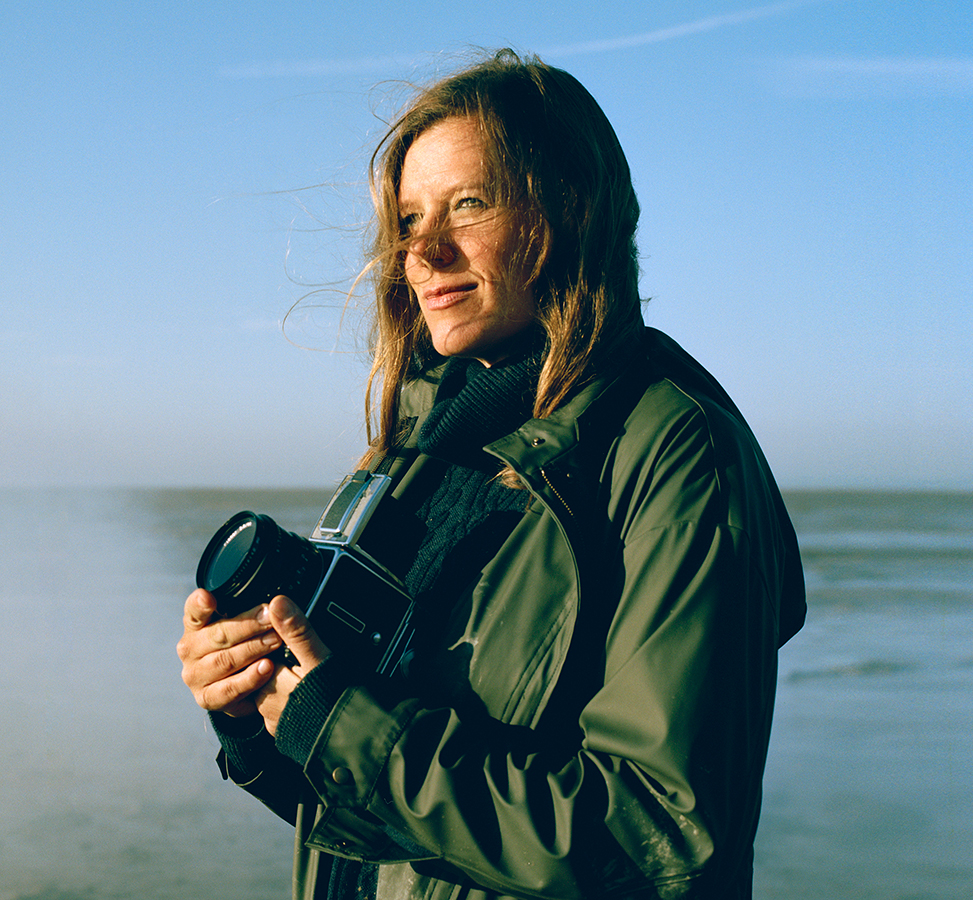
Julia Fullerton-Batten is an acclaimed fine art photographer. Her unusual locations, cinematic lighting and use of street-cast models are hallmarks of her inimitable style. She has won many prestigious awards and is a Hasselblad Ambassador. She is also widely published: see juliafullerton-batten.com/books or Instagram: @julia_fullertonbatten
What is Fine Art?
Fine art photography is your own idea, a creation that you see in your head – capture it, print and exhibit the work, and ideally sell it. I stage my photography, hire locations and studios. It’s really starting with a blank canvas like a painting. Then research, set up a camera, not have it moved, then set up the scene in front of me. Fine art photography is certainly the opposite of doing a commissioned piece. If you were to shoot advertising, then it’s someone else’s idea.
Intense pressure
It’s months and months of research and then the whole planning stage, casting the right models according to the story I’m trying to tell. Weeks, sometimes months of preparation for one really intense shoot day. Often, I have people who are recording behind the scenes. It’s not just popping in with a camera, few lights and a couple of assistants and having a jolly good time – it’s really intense. Somehow I get a kick out of it and really enjoy the story telling, and possibly educating people and myself.
Weighed down
So many different photographers are drawn to different ways of seeing photography and what excites them. I question why this approach excites me and I don’t have an answer. I would love to have become a painter and paint for hours and keep going back to it. Putting a camera on a tripod and shooting one frame at a time is the closest I can get to painting. You don’t touch the camera again, it’s there on the tripod – unless someone walks into it, so it’s usually taped down and weighed with sandbags so that doesn’t happen!
Control issues
I will have complete control over where the costumes are sourced from. I mostly find my own costumes and props. I’m very lucky living in London that there are many prop houses. I can go and get inspiration just by being there myself rather than sending someone. Or I might meet up with a stylist and we’ll go together and walk down the aisles to see what we can find. I do a lot myself, it’s very time-consuming, the whole process is a big task.
Do a recce
I will go and recce the location possibly two or three times, find my camera angle in advance and print it out so I know exactly which person is dealing with which prop and what their individual story is to create the final look and feel. I always cover off empty plates, shooting backgrounds into which I can drop a person.
Light work
It’s self-funded, one shoot day for one image. We go in as a big team, a lot of lifters and shifters, a lot of students who want experience and then I have my very professional lighting assistants who have been working with me for many years. We go in and I brief them and we get it done.
Attention to details
I don’t shoot to a memory card, I shoot tethered to a laptop attached to a really large screen. Every single detail is really important, if it’s not telling the story then it’s removed. I’m known for going into a location where I will remove the furniture, everything, and bring in my own bits to tell the story I want.
Making a statement
People view and read photographs in completely different ways and ultimately you need a little description or a title that could just tell you something about the image much more than just seeing the image on its own. I quite like reading a little bit of text that goes with the image to understand more about it.
Be seen
To get noticed, you can send an art director a pdf. There are so many competitions now to get your work seen. Some of the prizes are having a solo show. At portfolio reviews you get to speak to the right people you want to introduce your work to. It has become much easier to be a photographer now than it ever has been.
Get moody
I create mood boards just for myself that come from lots of different inspirations, including other photographers. You’ve got to be careful that you’re not copying someone’s style or idea – that is a definite no-no. You can be influenced and take inspiration.
Outside the box
Try coming up with something new. For example, at the same time as making my lockdown project, Looking Out From Within, I saw other photographers shooting people behind windows. I’ve always been drawn to seeing through window frames, it’s a picture within a picture.
I was aware I had to do something different and also stay true to my style of photography, therefore I brought in lighting and dressed my sitters in vintage clothing or had clothes sent to them which they would then try on and send me pictures of what they looked like. It was
a subtle idea, it doesn’t have to be complicated.
Thick skin
After a shoot I sometimes have regrets that I wish I’d covered off something else or I’ve photographed that person too far away or the composition should have been different. A lot of photographers do have self-doubt. I don’t have that much – I feel quite confident. Once I start working on an idea, I do all the research, then go onto the pre-planning stage, then production and shoot.
I’ve got to make sure there are no doubts lingering around because it’s taken a lot of my time and can be costly. If I had any doubts I wouldn’t do it. You’ve got to be thick-skinned and have a certain confidence and then just go for it.
Galleries
A recommendation from the right person certainly helps. If you’re introduced by someone to a gallery it is the best. People often say you can’t just approach galleries but yes you can, that’s how I got started. I was also fortunate to win a competition that involved exhibiting my work in five known galleries around the world for a year and then getting a book published.
That got me kick-started in the art photography world. Once you have a gallery, they start showing your work at art fairs, then other galleries contact you. They feed off each other, in a way. Galleries help guide you and work out a cost for your work.
Keep learning
You can study photography. I never did a Masters degree in photography, only a BTEC Diploma, then decided to become an assistant. You can study photography and art. I do remember sitting there and spending an hour analysing an Edward Weston nude, what the photographer is trying to tell, the composition and lighting, where the shadows were and why it was created a certain way.
Further reading:
- Top fine art portrait photography tips
- World’s best fine art photography revealed
- Fine art landscape photography

